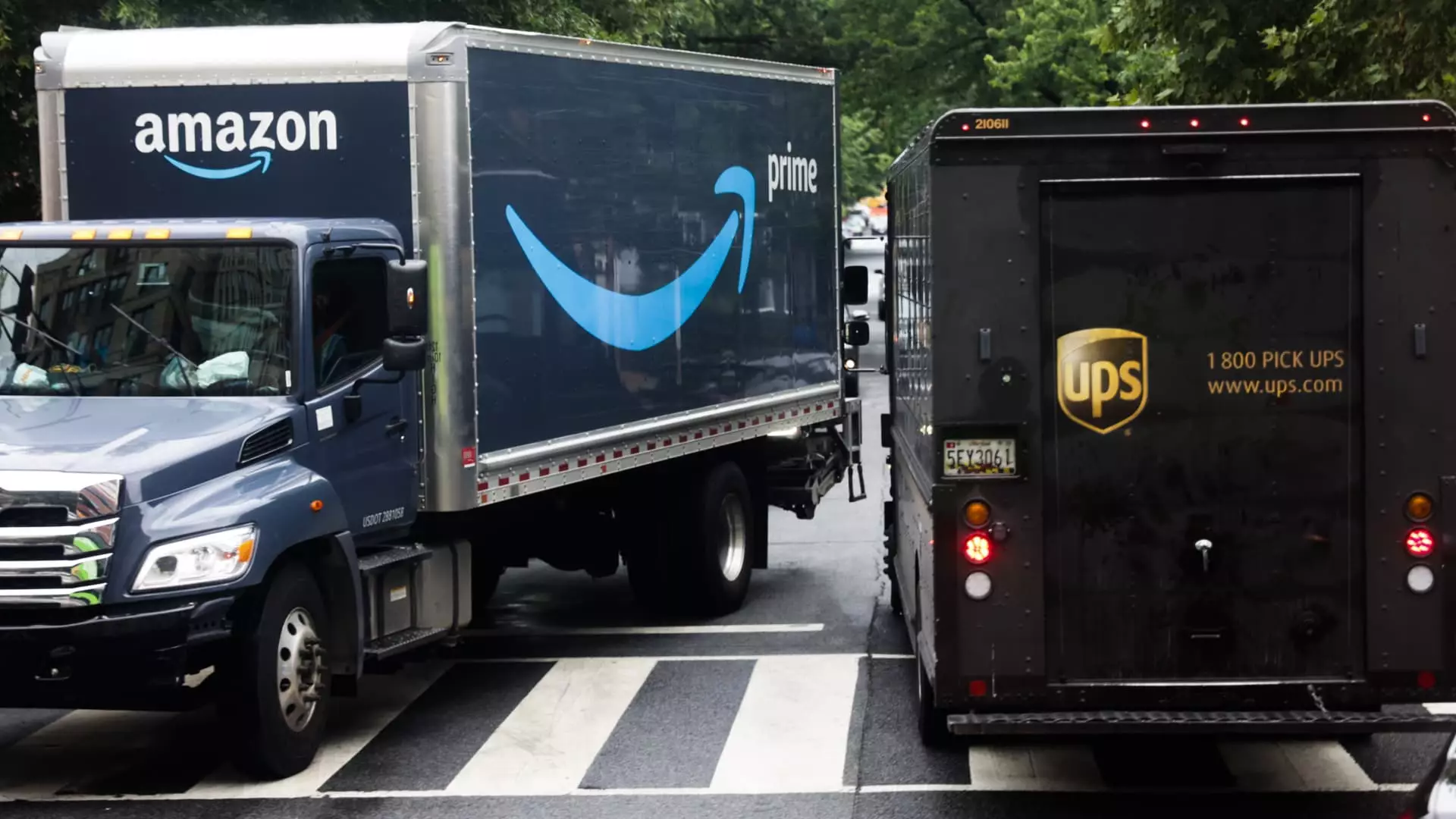On Thursday, the stock market witnessed a noteworthy shift when United Parcel Service (UPS) shares experienced a dramatic decline of over 15%. This sharp drop came in response to the company’s disappointing revenue guidance for the upcoming year, coupled with a significant decision to reduce its shipping volume with Amazon, its foremost client, by more than half by the latter part of 2026. Such developments raise pressing questions about the strategic shifts within UPS, as well as the ramifications for its competitive positioning in the ever-evolving logistics landscape.
In its fourth-quarter earnings report, UPS acknowledged this agreement with Amazon while explaining that despite being the largest customer, Amazon was not its most lucrative partner. CEO Carol Tomé elaborated on the challenges posed by the low-margin volumes coming from Amazon, indicating a strategic pivot toward more profitable opportunities. The decision to cut deliveries was framed as necessary for operational efficiency, suggesting that UPS aims to streamline its resources and improve its financial health.
Amazon’s logistics strategy seems to be evolving as well. The retail giant, which has historically leaned on external carriers like UPS and FedEx, is increasingly investing in its delivery capabilities. With a substantial in-house logistics framework now in place, including a robust network of planes, trucks, and contracted delivery services, Amazon’s reliance on UPS appears to be waning. Notably, Amazon’s efforts to enhance control over its delivery operations were catalyzed by previous disruptions, including a high-profile incident during the 2013 holiday season, underscoring the urgency behind its logistics expansion.
Financial Forecasts and Market Reactions
The financial implications of these developments are significant. UPS has lowered its revenue expectations for 2025, forecasting $89 billion, a regression from $91.1 billion in 2024 and falling short of analysts’ anticipated $94.88 billion. In its recent earnings call, the company reported fourth-quarter revenues of $25.30 billion, slightly below analysts’ expectations of $25.42 billion. The market’s reaction to these figures was swift and decisive, reflecting investor concerns over UPS’s profitability trajectory.
Moreover, UPS’s actions signal a broader trend where traditional logistics companies must evolve alongside the aggressive market maneuvers of e-commerce giants. As competition heats up and operational costs continue to rise, companies like UPS must not only adapt to changing customer dynamics but also fortify their value propositions. While UPS continues to experience volume growth from emerging players in the retail space, such as Temu and Shein, the necessity for strategic adaptation is paramount.
Cost-Saving Initiatives and Operational Changes
In response to these challenges, UPS has initiated a series of restructuring efforts aimed at cost efficiency. Through a comprehensive review of its operational framework, the company anticipates generating approximately $1 billion in savings. These measures include focusing on more lucrative segments such as healthcare, international shipping, and business-to-business (B2B) services.
The shift toward these high-margin sectors reflects a conscious decision by UPS to prioritize profitability over sheer volume. As outlined by Tomé, the intent is to create a more agile and distinct UPS that capitalizes on opportunities within these markets. This nuanced approach aims not only to mitigate the impact of reduced volumes from Amazon but also to reinforce the company’s overall market position.
As UPS navigates these turbulent waters, the company’s future will hinge on its ability to implement strategic reforms while remaining responsive to market trends. The ability to balance cost-cutting measures with investments in competitive capabilities could define UPS’s trajectory in the years to come.
While the immediate financial outlook may appear challenging, there lies an opportunity for UPS to emerge as a more resilient and profitable player in the logistics arena. By embracing change and proactively addressing the changing landscape, UPS can position itself not just as a carrier but as a vital partner in the increasingly complex global supply chain. Whether UPS can capitalize on these opportunities while mitigating risks remains to be seen, but the stakes are higher than ever in the world of shipping and logistics.

